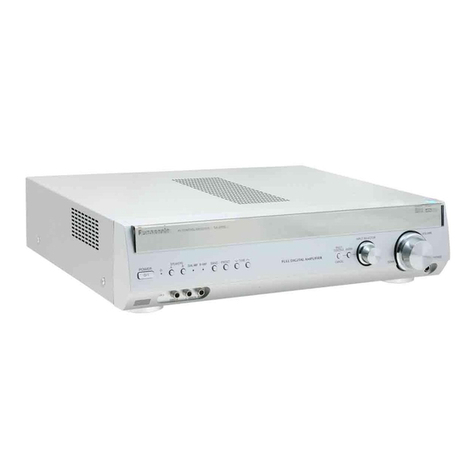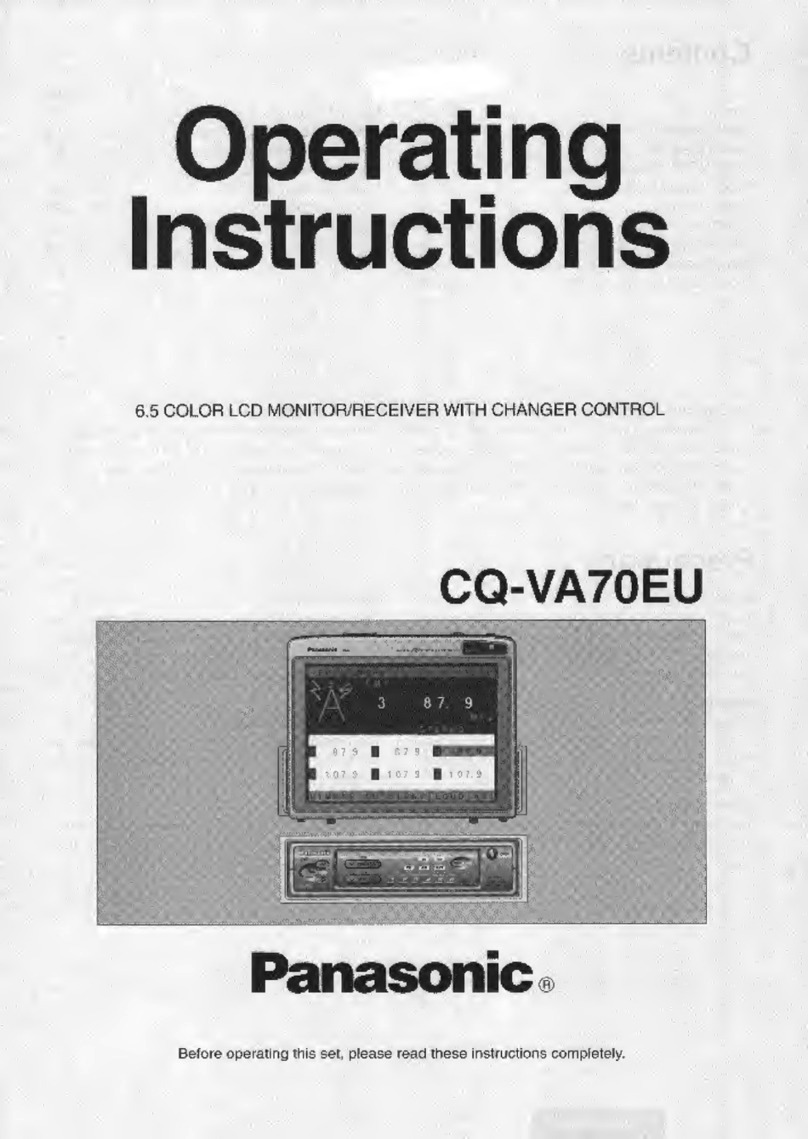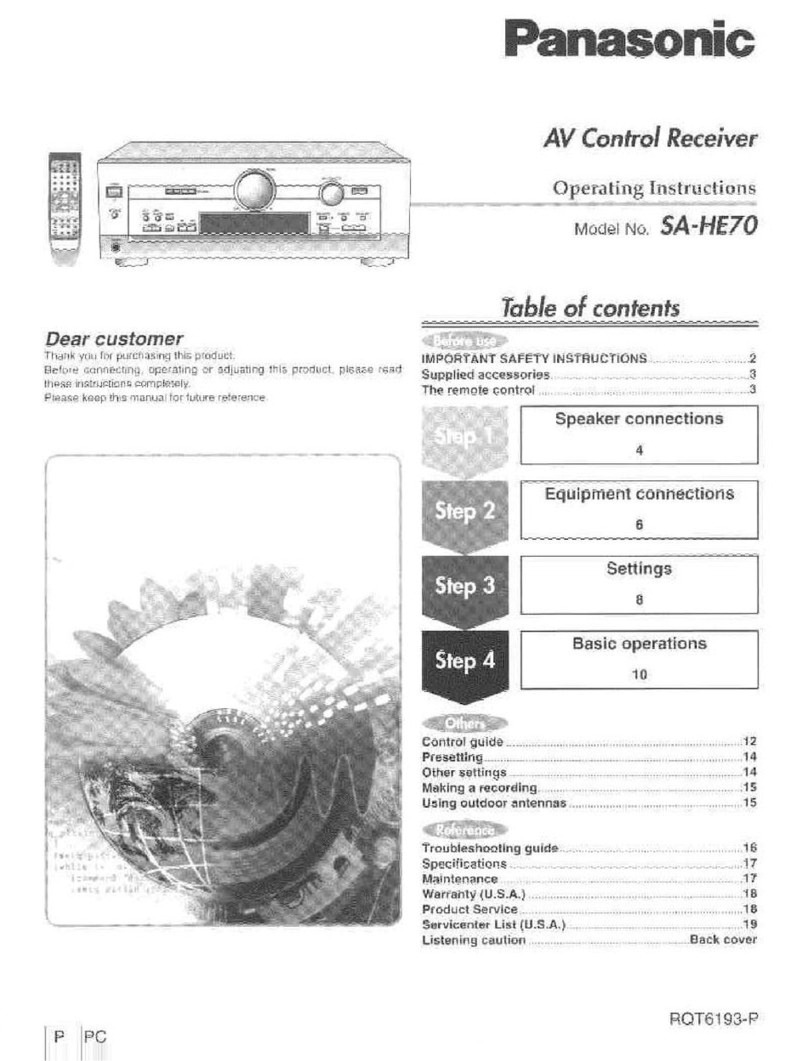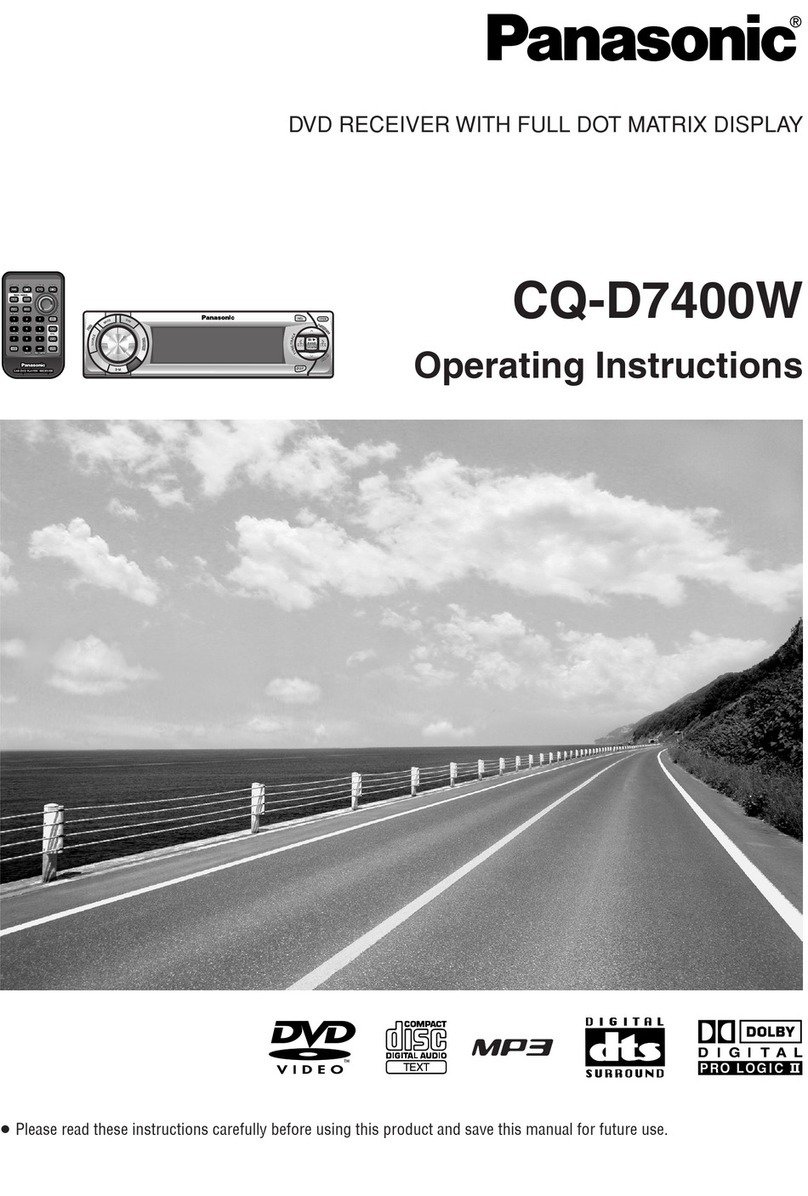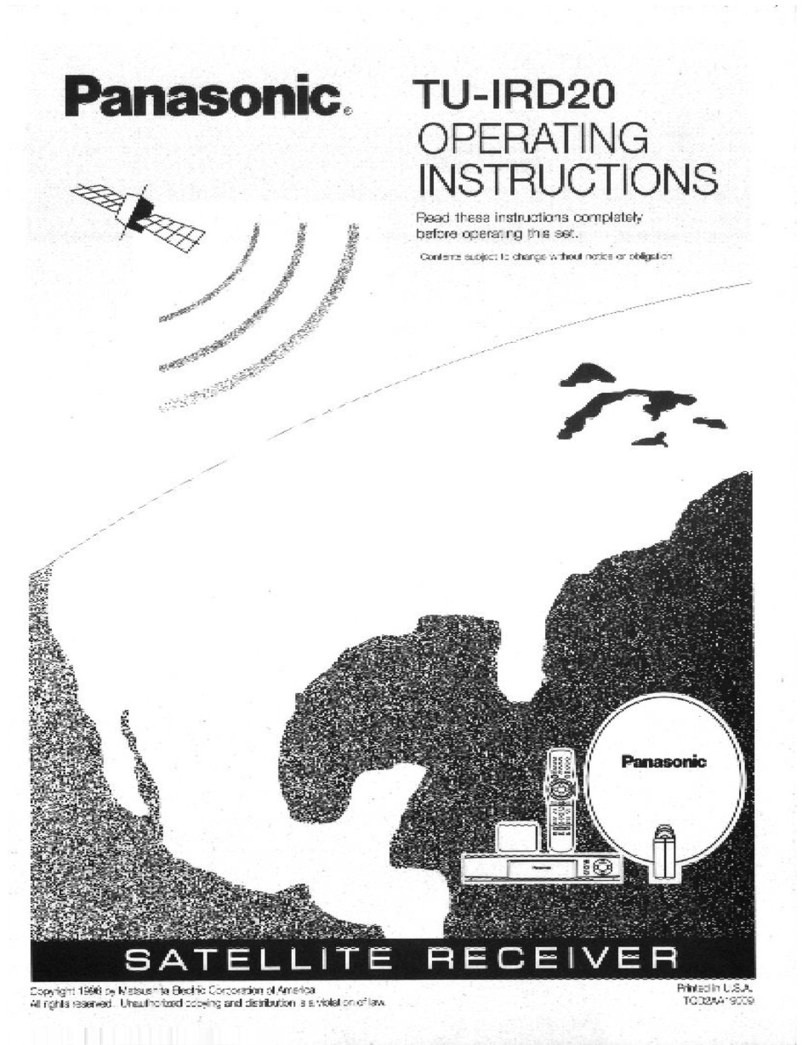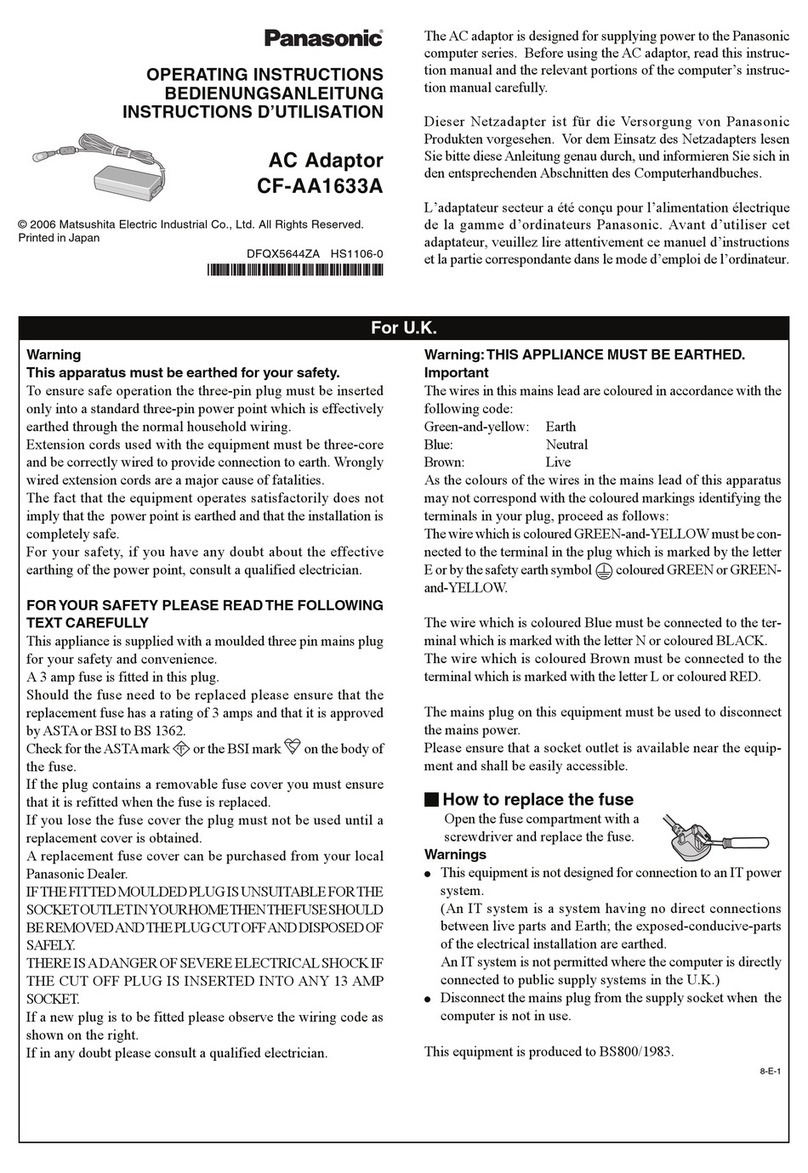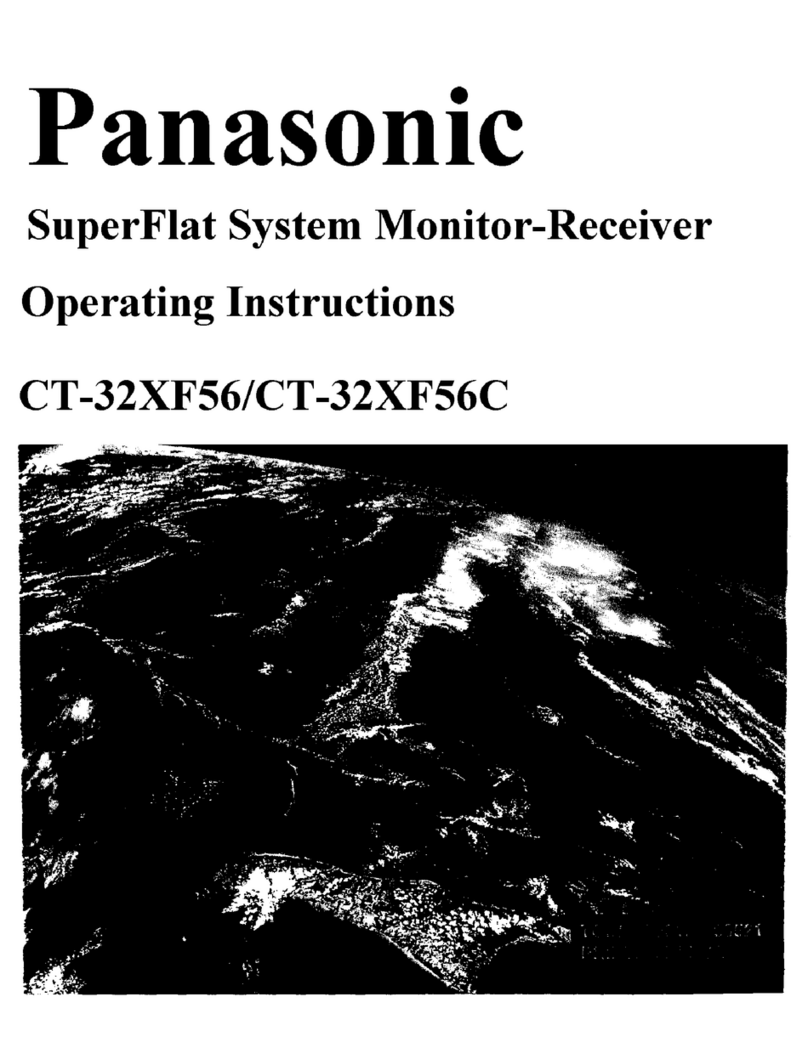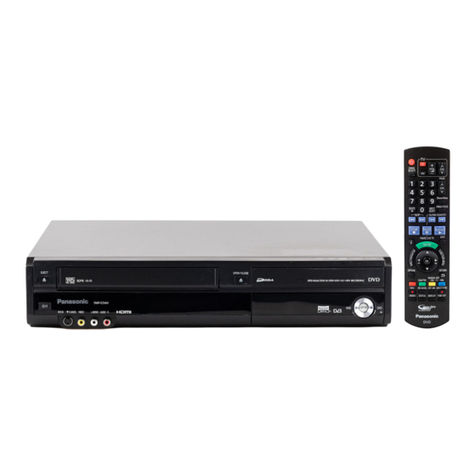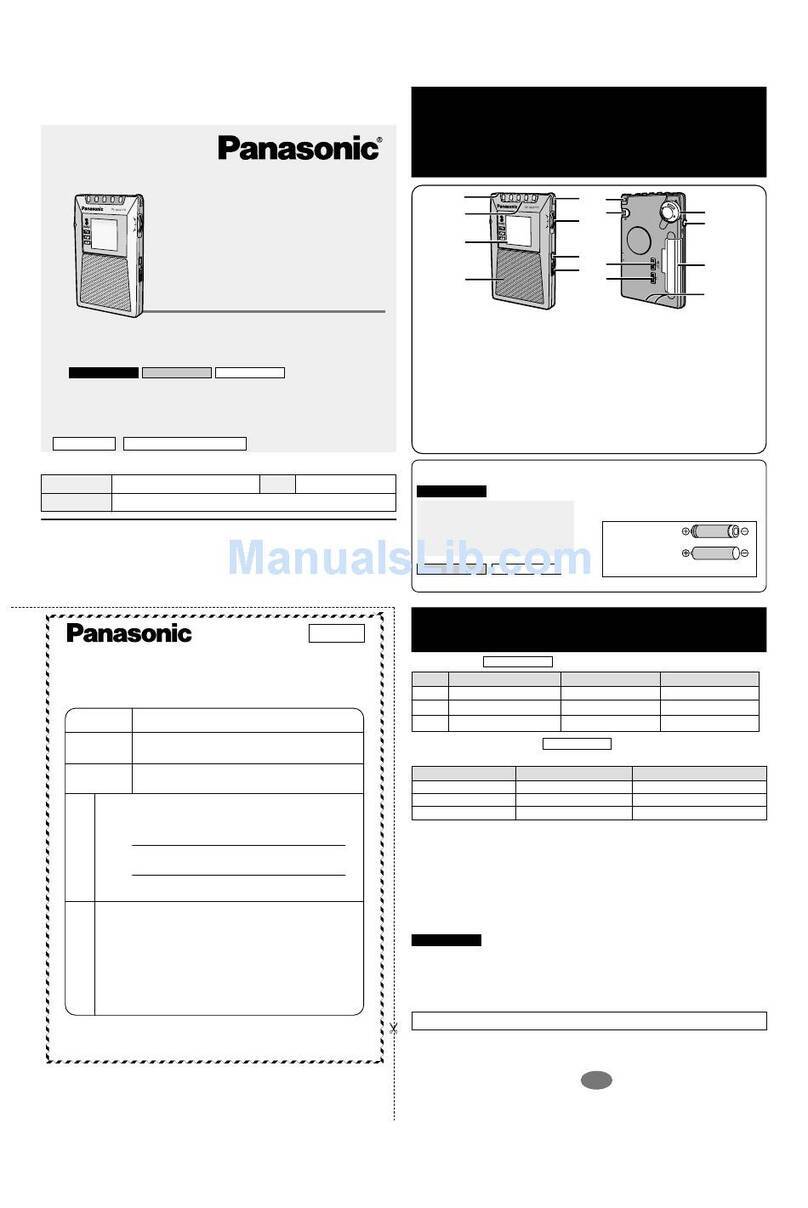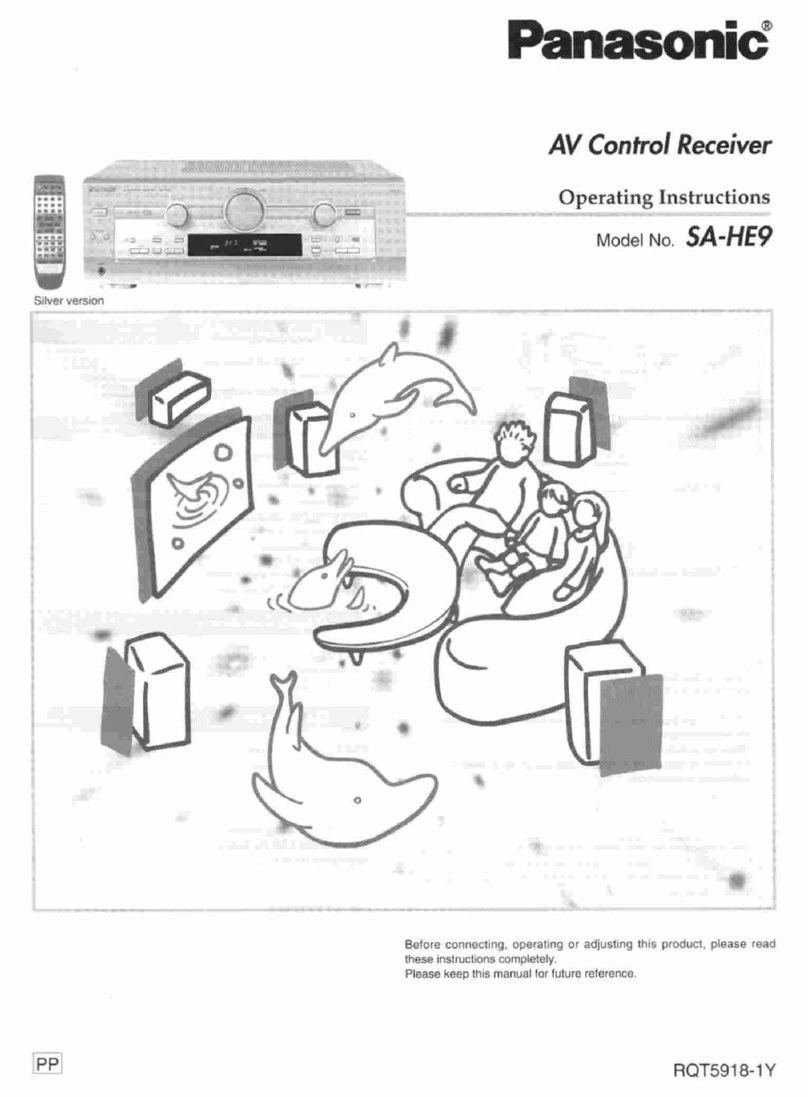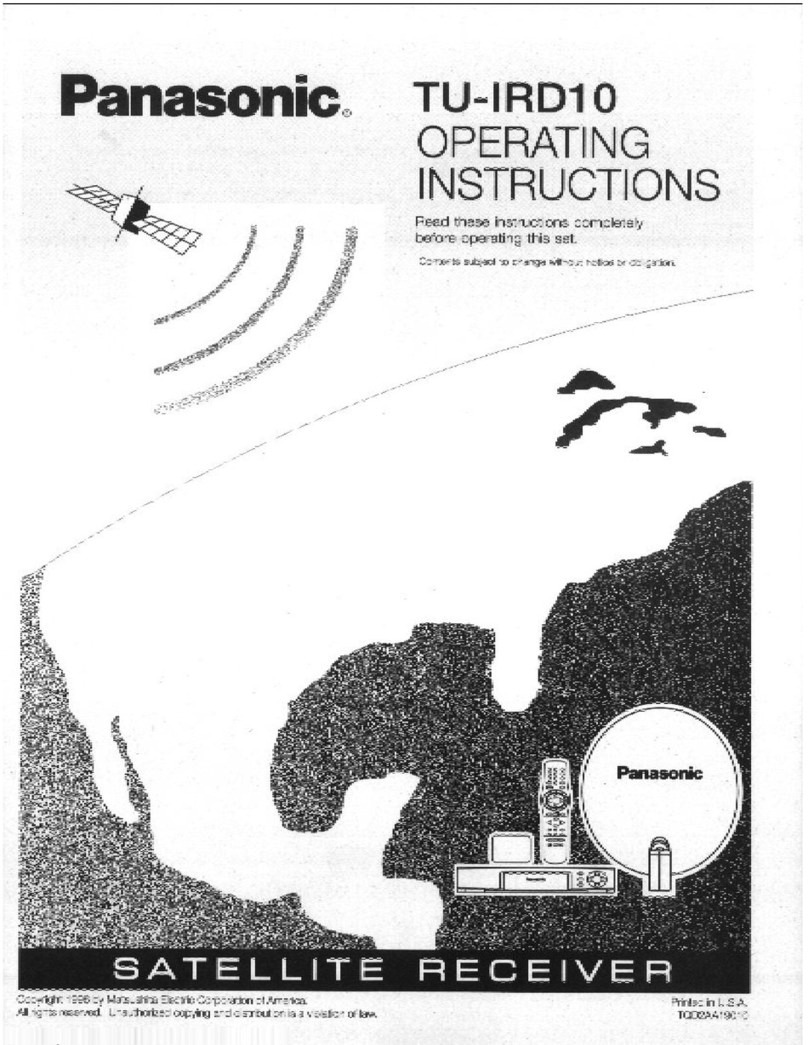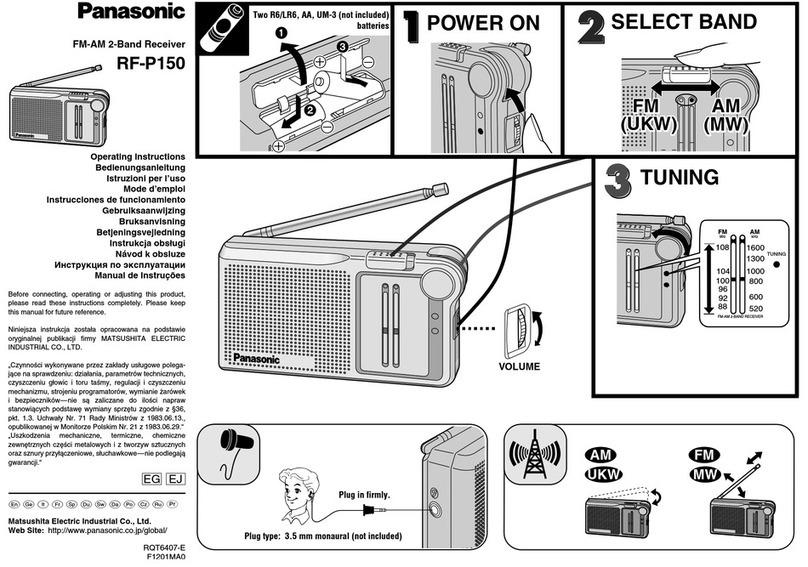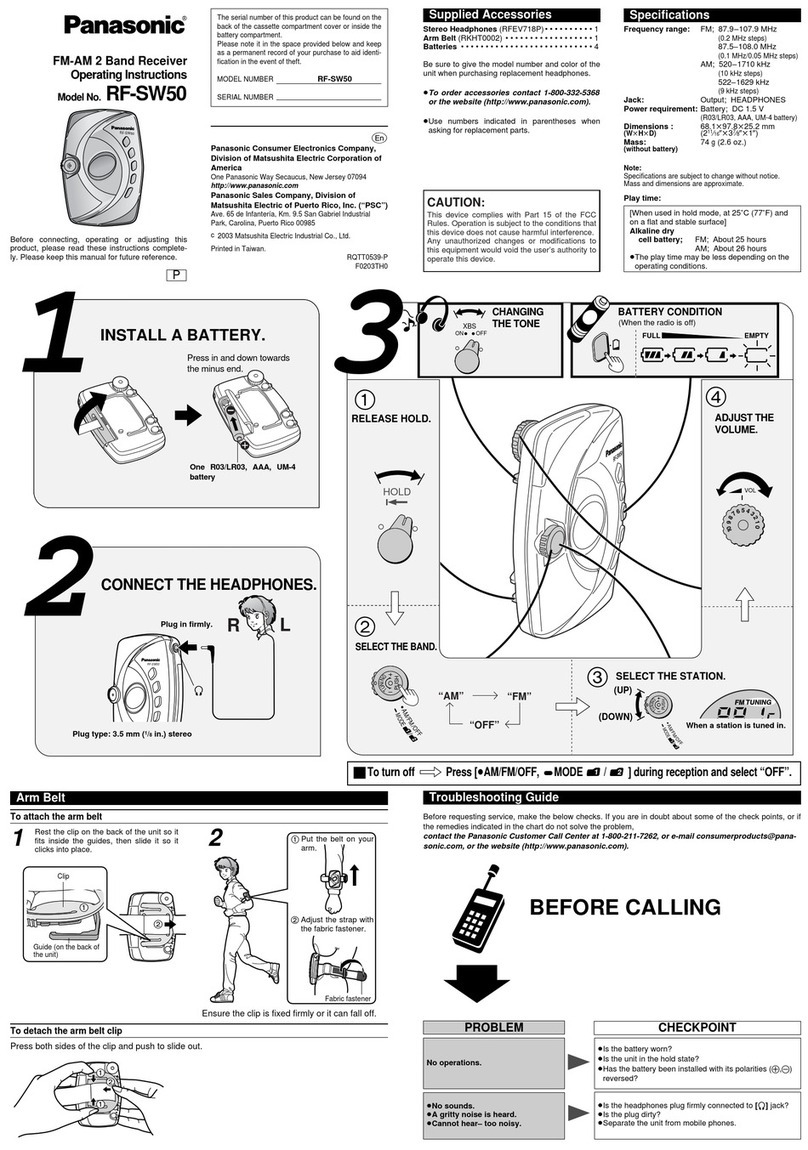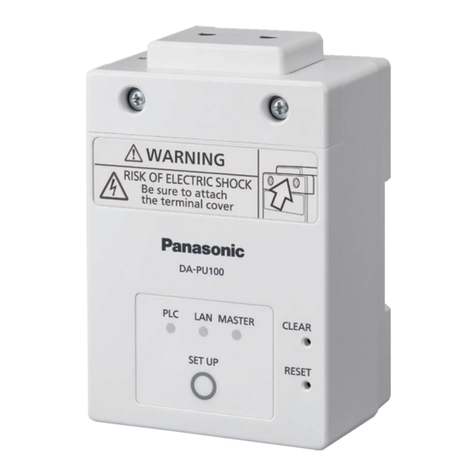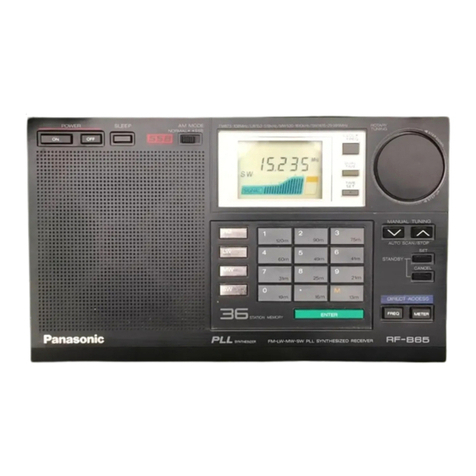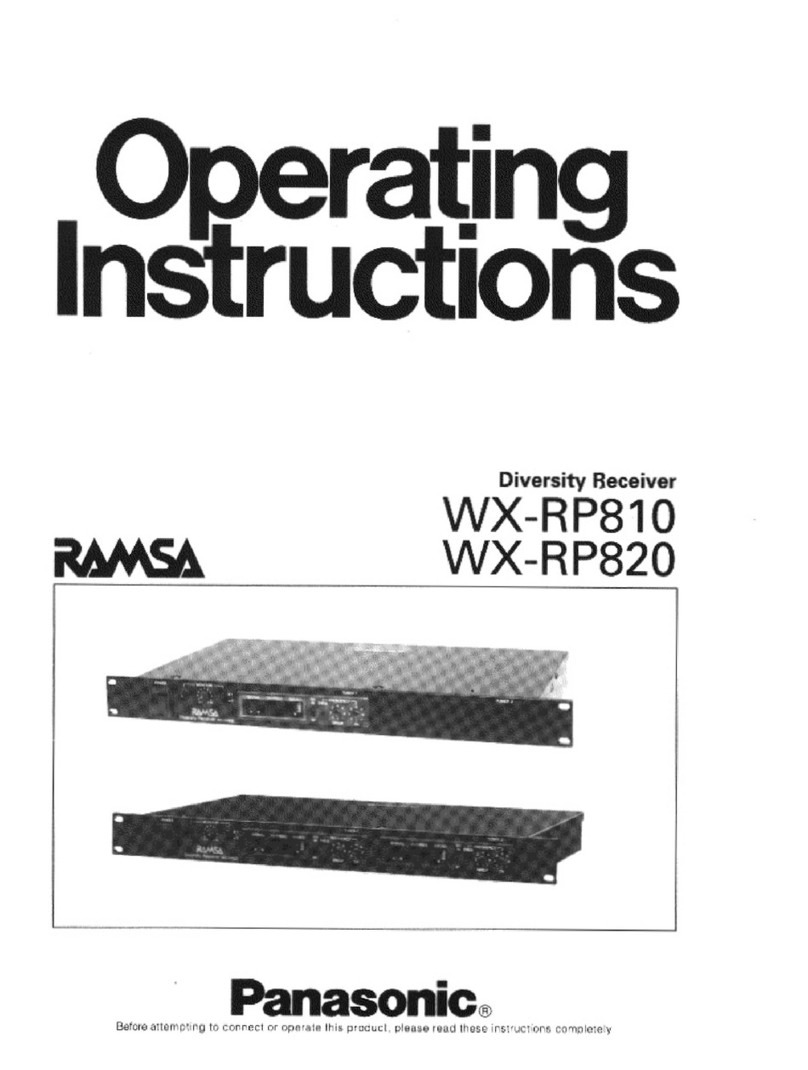
2.Determine the cause of the problem and correct it.
3.Press the STANDBY /ON button once again, supply the power.
Note:
When the protection circuitry functions, the unit will not operate unless the STANDBY /ON button is first switched STANDBY
and then ON again.
1.4. Safety Part Information
Safety Parts List:
There are special components used in this equipment which are important for safety.
These parts are marked by in the Schematic Diagrams & Replacement Parts List. It is essential that these critical parts
should be replaced with manufacturer’s specified parts to prevent shock, fire or other hazards. Do not modify the original design
without permission of manufacturer.
Table 1
Reference No. Part No. Part Name & Description Remarks
DZ701 ERZV10V511CS ZENER [M]
TH701 D4CAC8R00002 THERMISTOR [M]
L701 ELF18N067E COMMON MODE COIL [M]
L702 ELF21N015E COMMON MODE COIL [M]
L703 ELF21N015E COMMON MODE COIL [M]
T701 ETS48AA196AC MAIN TRANSFORMER [M]
T721 ETS19AA1X6AG BACKUP TRANSFORMER [M]
T800 ETS28AU379AC SUB TRANSFORMER [M]
PC701 B3PBA0000402 PHOTO COUPIER [M]
PC721 B3PBA0000402 PHOTO COUPIER [M]
RY721 K6B1AEA00003 PC POWER RELAY [M]
F1 K5D402BLA013 FUSE T4AL 250V [M]
P701 K2AA2B000015 AC INLET [M]
A2 K2CQ2CA00007 AC CORD [M]
C701 ECQU2A104MLC 0.1 [M]
C703 F1BAF1020020 1000P [M]
C704 F1BAF1020020 1000P [M]
C705 F1BAF1020020 1000P [M]
C706 ECQU2A104MLC 0.1 [M]
C714 F1BAF1020020 1000P 10V [M]
C732 F1BAF1020020 1000P [M]
C736 FIBAF471A013 470P [M]
C737 FIBAF471A013 470P [M]
2 Prevention of Electro Static Discharge (ESD) to
Electrostatically Sensitive (ES) Devices
Some semiconductor (solid state) devices can be damaged easily by electricity. Such components commonly are called
Electrostatically Sensitive (ES) Devices. Examples of typical ES devices are integrated circuits and some field-effect transistors and
semiconductor “chip” components. The following techniques should be used to help reduce the incidence of component damage
caused by electro static discharge (ESD).
1.Immediately before handling any semiconductor component or semiconductor-equiped assembly, drain off any ESD on your
body by touching a known earth ground. Alternatively, obtain and wear a commercially available discharging ESD wrist strap,
which should be removed for potential shock reasons prior to applying power to the unit under test.
2.After removing an electrical assembly equiped with ES devices, place the assembly on a conductive surface such as aluminium
foil, to prevent electrostatic charge build up or exposure of the assembly.
3.Use only a grounded-tip soldering iron to solder or unsolder ES devices.
4.Use only an anti-static solder remover device. Some solder removal devices not classified as “anti-static (ESD protected)” can
generate electrical charge to damage ES devices.
5.Do not use freon-propelled chemicals. These can generate electrical charges sufficient to damage ES devices.
6.Do not remove a replacement ES device from its protective package until immediately before you are ready to install it. (Most
replacement ES devices are packaged with leads electrically shorted together by conductive foam, aluminium foil or
comparable conductive material).
7.Immediately before removing the protective material from the leads of a replacement ES device, touch the protective material
4
-
45
-
45

